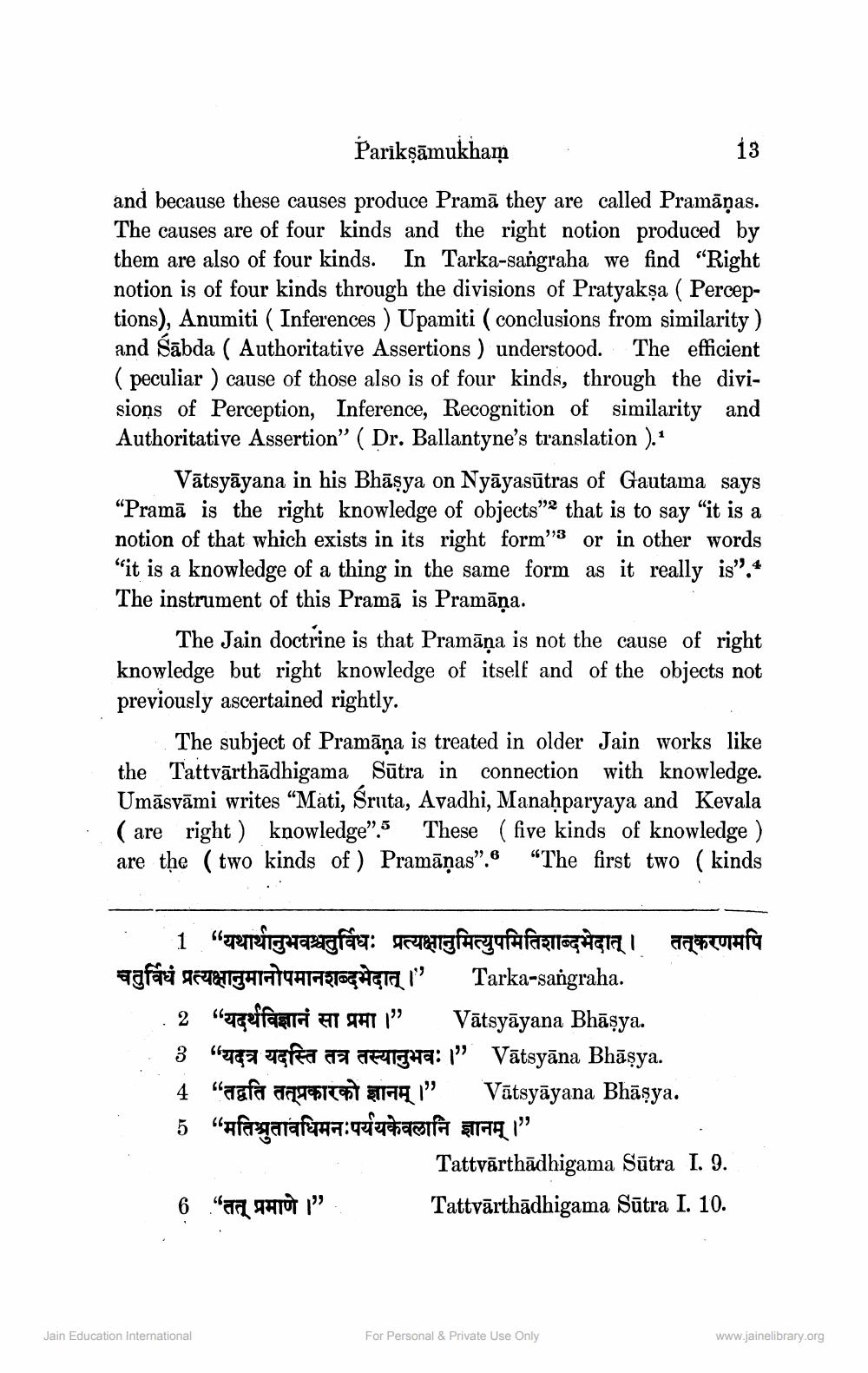________________
Parikşāmukham and because these causes produce Pramā they are called Pramāṇas. The causes are of four kinds and the right notion produced by them are also of four kinds. In Tarka-sangraha we find "Right notion is of four kinds through the divisions of Pratyakşa ( Perceptions), Anumiti ( Inferences ) Upamiti (conclusions from similarity) and sābda ( Authoritative Assertions ) understood. The efficient ( peculiar ) cause of those also is of four kinds, through the divisions of Perception, Inference, Recognition of similarity and Authoritative Assertion” ( Dr. Ballantyne's translation ).
Vātsyāyana in his Bhāșya on Nyāyasūtras of Gautama says "Pramā is the right knowledge of objects”? that is to say “it is a notion of that which exists in its right form"3 or in other words “it is a knowledge of a thing in the same form as it really is”.4 The instrument of this Pramā is Pramāņa.
The Jain doctrine is that Pramāṇa is not the cause of right knowledge but right knowledge of itself and of the objects not previously ascertained rightly.
The subject of Pramāna is treated in older Jain works like the Tattvārthādhigama Sūtra in connection with knowledge. Umāsvāmi writes “Mati, Sruta, Avadhi, Manaḥparyaya and Kevala ( are right ) knowledge”.5 These ( five kinds of knowledge ) are the (two kinds of ) Pramāņas”. “The first two ( kinds
1 "यथार्थानुभवश्चतुर्विधः प्रत्यक्षानुमित्युपमितिशाब्दभेदात् । तत्करणमपि garaj ATHLEHETATATTHETE / Tarka-sangraha. ..2 "zauffagiri hr THT 1" Vātsyāyana Bhāșya.
3 677 ve Ta akigha:” Vātsyāna Bhāşya. 4 "qafa gama A,” Vātsyāyana Bhāsya. 5 "fagarafema:namaetta 179741"
Tattvārthādhigama Sūtra I. 9. 6 "TEL TATUT ”. Tattvārthādhigama Sūtra I. 10.
Jain Education International
For Personal & Private Use Only
www.jainelibrary.org




